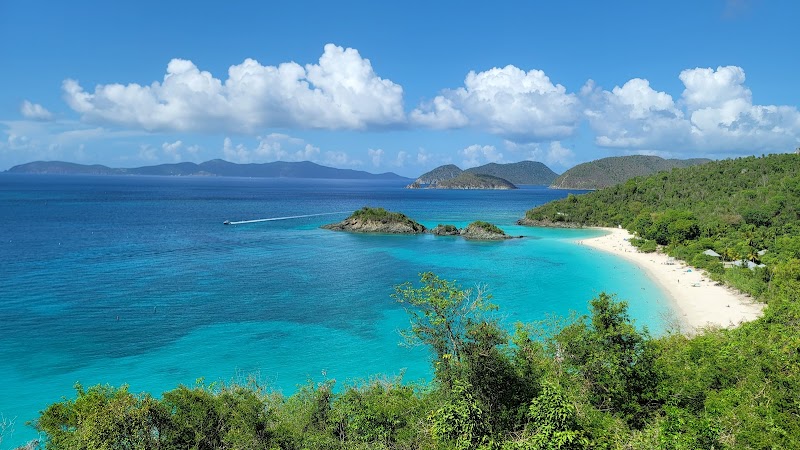Navigating Transportation Near Charlotte Amalie, St. Thomas: Your Practical Guide
Discover the smart way to navigate Charlotte Amalie with a guide to transportation options, from taxis and jitneys to car rentals and water taxis. This practical overview helps visitors plan seamless trips around the city and beyond, connecting transport details with local adventures.
Rent a Compact Car for Hilly Roads
Charlotte Amalie’s roads curve sharply and climb steeply—choose a small vehicle with good handling to drive confidently through the city and surrounding hills.
Use Jitneys for Budget Travel
Public jitneys offer frequent and affordable rides across St. Thomas, connecting key spots with an authentic local vibe. Knowing jitney routes saves dollars and time.
Plan Airport Transfers Ahead
Scheduling transport from Cyril E. King Airport beforehand ensures you avoid long waits, especially during cruise season and weekends.
Try Water Taxis for Island Hopping
Water taxis provide scenic and direct passage between Charlotte Amalie and nearby beaches or islands—perfect for outdoor explorers looking to maximize daylight hours.
Navigating Transportation Near Charlotte Amalie, St. Thomas: Your Practical Guide
Charlotte Amalie, the bustling capital of St. Thomas, boasts a variety of transportation options designed to put you right in the center of island adventure and culture. Whether you're disembarking from a cruise ship or arriving at the Cyril E. King Airport, options like taxis, car rentals, public jitneys, and water taxis provide flexible access throughout the city and beyond. The compact downtown encourages exploration by foot, but for those looking to venture further, a car rental unlocks the diverse terrain of St. Thomas—from mountain climbs to secluded beaches.
Taxis in Charlotte Amalie operate on fixed routes or by meter, enabling convenient travel to popular sites like Magens Bay or Coral World Ocean Park. For budget-minded travelers, the jitney system delivers a local experience, running frequently between neighborhoods and landmarks with an informal but reliable schedule. Water taxis link Charlotte Amalie to nearby cays and beaches, adding a scenic charm to your daily commute or island hopping plans.
When considering keywords critical to transportation around Charlotte Amalie, terms such as "Charlotte Amalie taxi service," "St. Thomas car rental," "public transportation St. Thomas," "water taxi Charlotte Amalie," and "airport transfers St. Thomas" stand out. These phrases align closely with what visitors often search when planning local transit.
Understanding the layout is essential: the city's winding roads challenge drivers but reveal impressive views at every turn. Rent a compact vehicle for navigational ease and avoid peak traffic hours for a smoother experience. Pedestrians should be mindful of uneven sidewalks and local driving customs.
Exploring beyond Charlotte Amalie is best done with a combination of jitneys and rental cars, while water taxis open routes to offshore snorkeling sites and pristine coves. This layered transportation network ensures visitors can maximize their time without sacrificing adventure.
Below, find curated nearby trips and excursions—from hiking trails crowned with panoramic vistas, to kayaking adventures where currents dare you onward. Each option blends practical guidance with adventurous spirit, ready to elevate your outdoor itinerary in St. Thomas.
Nearby Trips
All Adventures
Boat Charters
Water Activities
Adventures near Charlotte Amalie
Discover the unique and memorable adventures that make Charlotte Amalie special.
Frequently Asked Questions
What is the best way to get around Charlotte Amalie for first-time visitors?
For newcomers, taxis provide straightforward, meter-based routes ideal for direct travel. Pair this with walking downtown to absorb the vibrant atmosphere. Renting a compact car is recommended if you plan to explore beyond the city’s core.
How reliable are public jitneys in Charlotte Amalie?
Jitneys are frequent and economical but run on informal schedules that reflect local demand. It’s useful to ask residents or drivers for timing and destination details to avoid long waits.
Can I use water taxis to visit nearby attractions from Charlotte Amalie?
Absolutely. Water taxis connect the city to key coastal points and islands, making them a scenic alternative to roads. Be mindful of schedules changing with tides and weather.
Is driving difficult in Charlotte Amalie?
Roads are narrow, steep, and winding. Drivers should be comfortable with tight turns and occasional pedestrian-heavy zones. A small, maneuverable vehicle is best.
Are there any off-the-beaten-path transport options in the area?
Some local operators offer bike or scooter rentals, but conditions can be challenging due to hills and traffic. Jitneys often offer the most authentic local experience for those seeking grassroots travel.
What should I know about passenger safety on water taxis?
Operators prioritize safety but always check weather advisories and wear life jackets when available. Early bookings reduce last-minute pressure when conditions shift.
Recommended Gear
Comfortable Walking Shoes
Navigate uneven sidewalks and hiking trails comfortably with durable shoes featuring good grip.
Light Rain Jacket
Spring showers can surprise; a breathable rain jacket keeps you dry during transit or outdoor stops.
Sun Protection
Wide-brimmed hats, sunscreen, and sunglasses guard against strong tropical sun during midday travel or hikes.
Reusable Water Bottle
Hydration is key whether waiting for a jitney or hiking along a coastal trail, especially in warm weather.
Local Insights
Hidden Gems
- "Skyline Drive offers remote viewpoints overlooking Charlotte Amalie harbor rarely crowded with visitors."
- "Local fish market near the ferry docks presents fresh catches and authentic island atmosphere."
Wildlife
- "Keep an eye out for the brown pelican gliding low over the bays and the vibrant red-legged anole lizard scurrying on stone walls."
History
"Charlotte Amalie reflects Danish colonial heritage, evident in cobblestone streets and colonial-era forts found throughout downtown and hillside neighborhoods."
